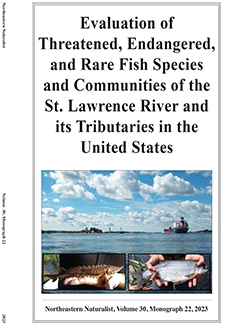BioOne.org will be down briefly for maintenance on 14 May 2025 between 18:00-22:00 Pacific Time US. We apologize for any inconvenience.
Monograph 22: Evaluation of Threatened, Endangered, and Rare Fish Species and Communities of the St. Lawrence River and Its Tributaries in the United States

